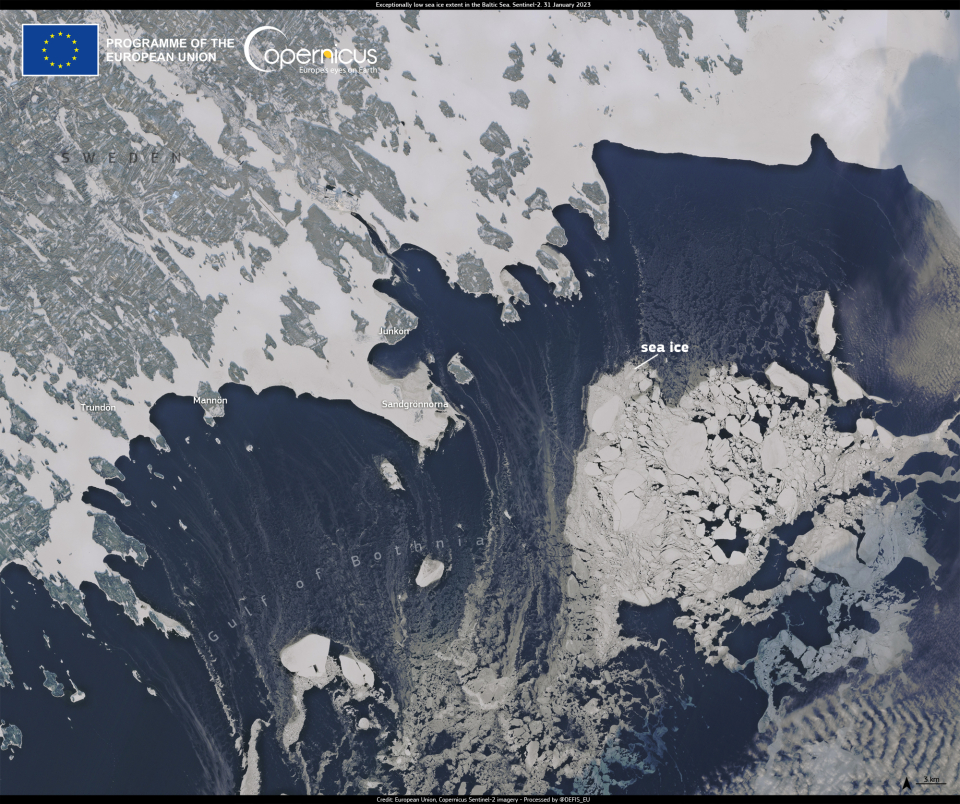Published on 3 February 2023
Every year, as the winter months set in, sea ice forms in the Baltic Sea. However, according to the Finnish Meteorological Institute, its extent this year is among the lowest on record. In fact, the sea ice extent on 31 January 2023 was 27,000 km², less than half the extent registered on the same date in 2022 (57,000 km²). Rising global temperatures are among the causes that are making sea ice melt at a faster rate.

This image, acquired on 31 January 2023 by one of the Copernicus Sentinel-2 satellites, shows sea ice floating in the Gulf of Bothnia, between Sweden and Finland, and provides a glimpse at the current situation.
Click here to view the image at full resolution/
Copernicus data are key to the monitoring of the consequences of climate change on the different Earth systems: the Copernicus Marine Service provides up-to-date open data on the extent of sea ice.
Source:
Copernicus. (2023c, February 2). Exceptionally low sea ice extent in the Baltic Sea. Image of the Day. https://www.copernicus.eu/en/media/image-day-gallery/exceptionally-low-…